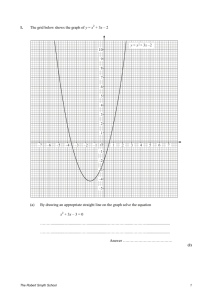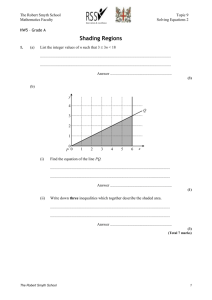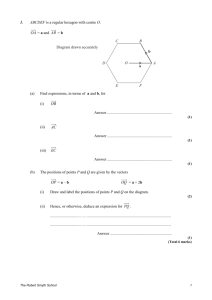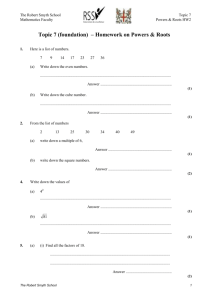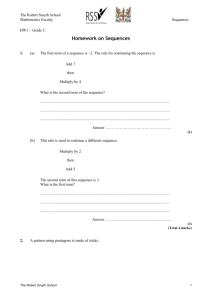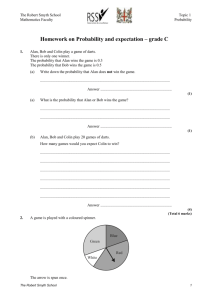Community Research Report
advertisement
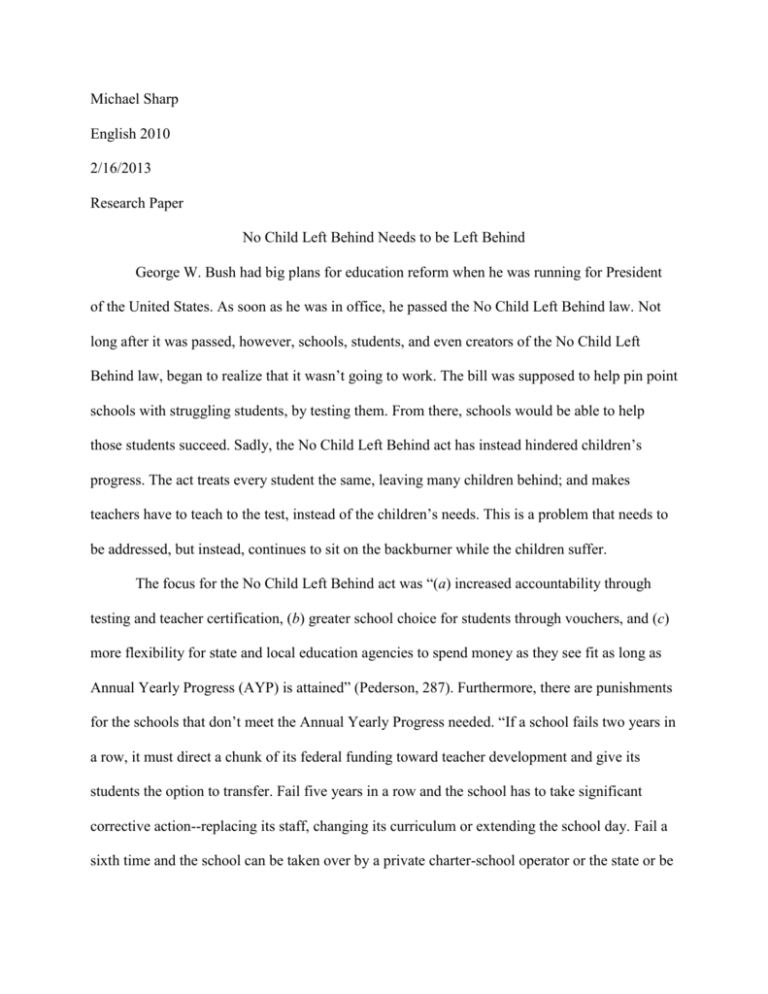
Michael Sharp English 2010 2/16/2013 Research Paper No Child Left Behind Needs to be Left Behind George W. Bush had big plans for education reform when he was running for President of the United States. As soon as he was in office, he passed the No Child Left Behind law. Not long after it was passed, however, schools, students, and even creators of the No Child Left Behind law, began to realize that it wasn’t going to work. The bill was supposed to help pin point schools with struggling students, by testing them. From there, schools would be able to help those students succeed. Sadly, the No Child Left Behind act has instead hindered children’s progress. The act treats every student the same, leaving many children behind; and makes teachers have to teach to the test, instead of the children’s needs. This is a problem that needs to be addressed, but instead, continues to sit on the backburner while the children suffer. The focus for the No Child Left Behind act was “(a) increased accountability through testing and teacher certification, (b) greater school choice for students through vouchers, and (c) more flexibility for state and local education agencies to spend money as they see fit as long as Annual Yearly Progress (AYP) is attained” (Pederson, 287). Furthermore, there are punishments for the schools that don’t meet the Annual Yearly Progress needed. “If a school fails two years in a row, it must direct a chunk of its federal funding toward teacher development and give its students the option to transfer. Fail five years in a row and the school has to take significant corrective action--replacing its staff, changing its curriculum or extending the school day. Fail a sixth time and the school can be taken over by a private charter-school operator or the state or be shut down altogether” (Webley). The law originally had good intentions but many schools quickly realized how bad it was and showed their dislike. Webley said: “By the time the law's first anniversary came around, Kennedy, who had stood beside Bush at the bill signing, boycotted the ceremony. By its second anniversary, at least 20 states had banded together in revolt, urging Congress to exempt them from the law” (Webley). There are many reasons why so many people rejected the No Child Left Behind Act. First, is how these tests affected the teachers. In order to get their students to be able to pass these tests, teachers had to start “teaching to the test.” Teaching to the test is when a teacher isn’t able to teach any other subject but what the test covers. They have to drill the students on questions, with the hope that the information sticks. It is stressful for students and teachers alike. Smyth addresses why teaching to the test is so bad. “High-stakes testing is forcing instruction to change from exploratory, lifelong learning to teaching to the test through drill and kill.” Smyth goes on to say that, “teaching to the test reduces teacher creativity, innovative instruction, the use of varied teaching strategies for diverse students, and teacher and student motivation” (Smyth, 134). It makes it so much more difficult for teachers to help their students succeed when they don’t get much of a chance to individually help their students. All their time is being overspent on just a few subjects. With constant test preparation, it leaves little time to personally help each student. Webley reports actual teachers reactions to not being able to teach their student material not included in the “core” subjects. “They complain that NCLB has sucked the creativity out of their lesson plans, forcing them to narrow their curriculums and teach only those concepts that will be on state tests. ‘The worst thing is when students have questions and interests and I have to say, “Put your hands down. We don't have time to talk about that,”’ says Leslie Hanna, who teaches eighth-grade science, a subject included on Virginia's tests along with math and reading. The push to improve scores means there is little or no time for some students to pursue electives like art and music. The band director, Linda Gammon, mentions one seventh-grader who was really excited this fall about playing a baby tuba but had to drop out of the band in order to take an additional reading class. ‘Every time I see him, I ask him how's he’s doing, and he says, “I’m doing O.K., but I really wish I was playing an instrument,”’ she says. ‘I understand he needs the extra help in reading, but it really tugs at my heart that he can’t have the experience of playing in the band. These classes can be the highlight of their day--the only time they feel like they are succeeding’” (Webley). Teachers became teachers because they love being able to help children learn. These tests are taking away teachers creativity, control, and love of their profession. The second problem with these tests is in regards to the effect it is having on the children. The major emphasis that is being put on the tests is stressing out many of the students. Smyth reported that “elementary students experience high levels of anxiety, concern, and angst about high-stakes testing.” He goes on to say that, “elementary students were anxious and angry about aspects of the testing culture, including the length of the tests, extended testing periods, and not being able to talk for long periods of time… When students are drilled every day about testing procedures and consequences, the fear of failure prevails” (Smyth, 134). These students need a good, healthy environment that is conducive to learning. The students are instead put in stressful situations in preparation for the constant testing. There is a specific group of student that are especially struggling with the No Child Left Behind act, these are the LEP students, or limited English proficient students. In regards to these students Smyth said, “State assessments demand high levels of English-language ability. Because of the linguistic complexity of these exams, many schools cannot report AYP and therefore receive low state marks and lose state and federal funding; in the end, LEP students are left behind” (Smyth, 135). If every student is treated as if they are the exact same, then there are many that will be over or under looked. Students vary in their ability to learn, focus, speak English, and participate. Before this law, teachers had the ability to be creative and focus their teaching methods to all of their students with differing needs. Now, teachers have to focus all their time preparing students for weekly testing. The result is that the diverse population of students are losing out on the good education that they should receive. Fitzgerald shows a survey of graduation rates in the state of Minnesota after the No Child Left Behind act was in place for some time. He reports that the law, “hasn't made a dent in fixing the achievement gap. Minnesota's Black and Hispanic students are either dropping out of high school or failing to continue their post-high school education at a stunning rate whether you measure the issue using NCLB statistics or not” (Fitzgerald). These statistics show that these tests don’t have much effect on students graduating. Lastly is the fact that other subjects are being left out. Pederson reports on an assessment that shows this and by diifferent schools giving their evaluation. “There is a greater focus of resources and responsibilities for accountability purposes. There is less attention given to the non-tested subject areas. (Mountain Western state) Those non-tested subject areas remain invisible. There is less interest in developing those areas. People are so busy with the big [tested subjects] there is no pressure to focus on fine arts, PE, or health. Math and reading is [sic] the primary focus. The rest is falling to the wayside. (North Central state)” (Pederson, 289). It is sad to see other important subjects being swept under the rug because all the focus has to be on preparing students for the assessment tests. The No Child Left Behind law has, all around, hurt the education of the nation’s children. They are struggling to learn, while the teachers are struggling to teach. Educators are wanting to find a different way to help their students improve. In reference to the law, Webley quotes Fairfax County superintendent Jack Dale saying “It's become meaningless” (Webley). All around the nation, people agree that change needs to take place and that the No Child Left Behind law has hurt more than it has helped. Fitzgeral, John. “Another Example of How the No Child Left Behind Law is Bogus.” Minnesota 2020. (2009) Web. 11 Feb. 2013. asz Pederson, Patricia Velde. "What Is Measured Is Treasured: The Impact Of The No Child Left Behind Act On Nonassessed Subjects." Clearing House 80.6 (2007): 287-291. Academic Search Premier. Web. 9 Feb. 2013. Smyth, Theoni Soublis. "Who Is No Child Left Behind Leaving Behind?" Clearing House 81.3 (2008): 133-137. Academic Search Premier. Web. 9 Feb. 2013. Webley, Kayla. "Why It's Time To Replace No Child Left Behind." Time 179.3 (2012): 40. MAS Ultra - School Edition. Web. 9 Feb. 2013.

